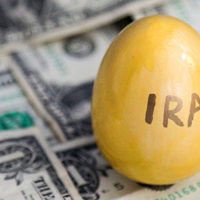Should you name a trust as IRA beneficiary?

An IRA is a popular vehicle to save for retirement, and it can also be a powerful estate planning tool. Some people designate a trust as beneficiary of their IRAs, but is that a good idea? The answer: possibly.
IRA benefits
The benefit of an IRA is that your contributions can grow and compound on a tax-deferred basis for many years. The longer you leave the funds in the IRA, the greater the potential growth, because taxes aren’t taking a bite out of the account. If you don’t need to tap your IRA funds during your life — other than required minimum distributions (RMDs) — you can stretch out its benefits even longer by designating your spouse or child as beneficiary.
For traditional IRAs, you must begin taking annual RMDs by April 1 of the year following the year in which you reach age 70½ (your “required beginning date,” or RBD). The distribution amount is calculated by dividing your account balance by your remaining life expectancy.
If you name your spouse as beneficiary, he or she can transfer the funds to a spousal rollover IRA and delay distributions until his or her own RBD. If someone other than your spouse inherits your IRA, that person must take distributions even if he or she hasn’t reached age 70½ but can stretch them out over his or her own life expectancy.
If you designate multiple beneficiaries, distributions will be based on the oldest beneficiary’s — that is, the shortest — life expectancy.
One thing you shouldn’t do, unless you have a specific reason, is designate your estate as beneficiary or fail to name a beneficiary at all. Under those circumstances, the IRA must be distributed to your heirs within five years (if you die before your RBD) or over your remaining statistical life expectancy (if you die after your RBD).
Why use a trust?
One reason to name a trust as IRA beneficiary is to prevent a loved one from emptying the account too quickly and defeating your tax-deferral purposes. Another, if you have children from a previous marriage, is to ensure that they’ll benefit from an IRA you leave to your current spouse.
If you decide to use a trust, be sure it’s designed properly to meet the requirements of a “see-through” trust. Otherwise, distributions will be accelerated as if you’d failed to name a beneficiary. To qualify, the trust must be valid under state law, be irrevocable (or become irrevocable on your death) and name only identifiable individuals as beneficiaries.
In addition, the trustee must furnish the trust documentation to the IRA custodian by October 31 of the year following the year of death.
Under the right circumstances, naming a trust as IRA beneficiary can be a good strategy. However, contact us before taking action. We can help assess your circumstances and determine if this is the right move for you.
© 2018
